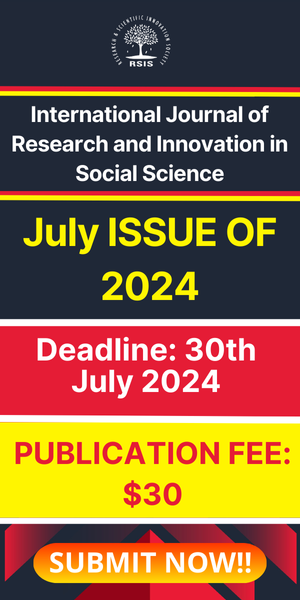Aquifer Characterization Using Evidences from Hydro-Geophysical Data: A Case Study of Ilorin Crystalline Basement Complex Southwestern Nigeria
- September 18, 2020
- Posted by: RSIS Team
- Categories: Electrical and Electronics Engineering, IJRIAS
International Journal of Research and Innovation in Applied Science (IJRIAS) | Volume V, Issue III, January 2020 | ISSN 2454–6186
Olatunji, J.A.1,2*, Awojobi, M.O.3, Olasehinde, D.A.3*, Akinrinmade, O.A.2, Olasehinde, P.I.4
1Department of Minerals & Petroleum Resources Engineering Technology, Kwara State Polytechnic, Ilorin, Nigeria
2Department of Geology and Mineral Sciences Kwara State University Malete, Ilorin, Nigeria
3Department of Agricultural and Biosystems Engineering, Landmark University, Kwara State, Nigeria
4Department of Geophysics, University of Ilorin, Nigeria
*Corresponding author
Abstract: – Aquifer delineation and characterization pose a challenge due to the complex nature of rocks, tectonic activities that have affected them and the localized nature of aquifers within the crystalline complex. This research aims at presenting characteristics of aquifers in parts of Ilorin municipality using evidences from hydrogeophysical data. Hydrogeophysical field data acquisition were done using Vertical Electrical Sounding and interpreted to infer aquifer characteristics and subsurface lithological succession. Three to six geo-electric layers were obtained across the study area. The curve types obtained were H, K, Q, HK and A. The dominant curve type is H-type which is considered to have three successive layers with resistivities ρ1, ρ2, ρ3 and a central low value (ρ1>ρ2<ρ3). Layer resistivities and thickness geo-electric parameters deducted include Transverse Resistance (T), Longitudinal Conductance (S), Coefficient of Anisotropy () and reflection coefficient (r). The values of transverse resistance (T) ranges between 297740.8 and 510 m 2. The highest values of total transverse unit resistance are observed around the northwestern and north eastern parts of the study area while the lowest value is obtainable in the southern and central parts. Longitudinal unit conductance values within the study area range between 2.157 and 0.07mhos. It is observed that 90% of the study area has a very high longitudinal unit conductance which implies a good aquifer protective capacity. The southeastern area has low values of longitudinal unit conductance. Coefficient of anisotropy (ʎ) values in the area varies between 3.8 and 1.02. A high value of coefficient of anisotropy is observed around central areas of the study area. This area is considered to be a good groundwater potential area. Reflection Coefficient(r)shows the degree of fracturing. It is expected that good aquiferous zones overburden are relatively thick with low reflection coefficient. Reflection coefficient values ranged between 0.91 and 0.02. The western and central part reflected thick overburden and fractured basement. Areas of high, medium and low groundwater potentials have been delineated. Ilorin is considered to be of medium or moderate in terms of groundwater potential.
Keywords: Basement Complex, Geo-electric parameters, Transverse Resistance, Longitudinal Conductance, Coefficient of Anisotropy, reflection coefficient, aquifer characterization.


